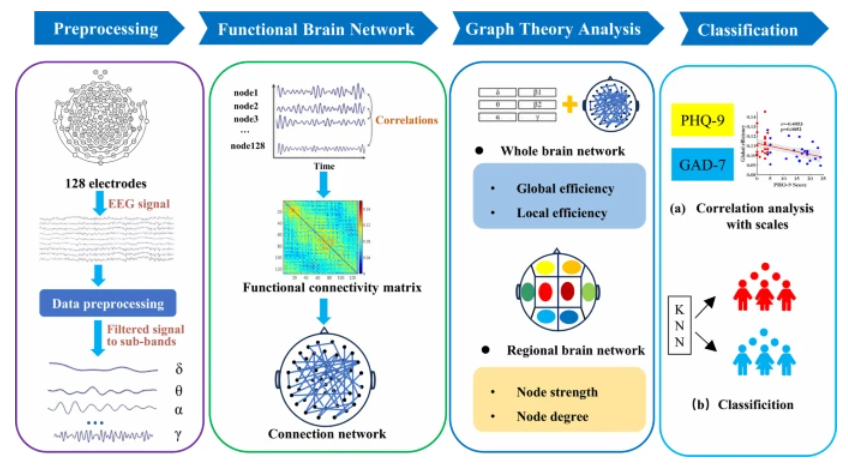EPJ ST Highlight - Functional brain networks disrupted in major depression
- Details
- Published on 23 July 2025

A detailed analysis of functional brain networks from individuals with and without major depressive disorder using graph theory has revealed subtle but significant differences between these groups that could aid early diagnosis of this devastating condition.
Severe depression or major depressive disorder (MDD) is the commonest serious mental disorder, and its high and growing prevalence – it is thought to affect over 300 million people worldwide – represents a major societal challenge. Many studies have shown some characteristic patterns in brain structure and activity in depressed individuals, but the details and the likely reasons are unknown. Now, however, an interdisciplinary group of researchers led by Mengmeng Du of Shaanxi University of Science and Technology, China, have used the mathematical technique of graph theory to analyse networks of brain activity in different regions and at different scales. This work has been published in the journal EPJ Special Topics (EPJ ST).
Electrical activity in the brain is typically measured using electroencephalography (EEG), in which signals are detected with electrodes placed around the patient or subject’s scalp. Activity in different frequency bands can be related to different types of cognitive activity. Du and her colleagues recorded EEG signals from 20 MDD patients and 26 healthy controls, filtered that data into six sub-bands according to frequency, and constructed a functional brain network for each participant in each sub-band. The topological properties of each network were then analysed using graph theory.
The researchers found differences between depressed and healthy individuals mainly in the low-frequency delta sub-band, which is linked to sleep and memory, and the high-frequency gamma one, which is associated with higher cognitive functions. Interestingly, gamma activity was stronger in the depressed cohort – a possible sign of cognitive over-activation – whereas delta activity was weaker. Significant differences were also observed in the networks in the left frontal region and left parietal-occipital region of the brain.
“We now need to prove that our work can be generalised, by extending our study to include more ethnicities and age groups”, says Du, “But, hopefully, identifying network features that clearly correlate with severe depression will pave the way for earlier and more precise diagnosis and, perhaps, more effective treatment.”
Du, M., Chen, X., Shi, Z. et al. The disturbed functional brain network in major depressive disorder identified by graph theory analysis. Eur. Phys. J. Spec. Top. (2025). https://doi.org/10.1140/epjs/s11734-025-01776-9
The article is part of the EPJ ST Special Issue on Functional Neurons and Networks which is still open to submissions. For further information click here.




